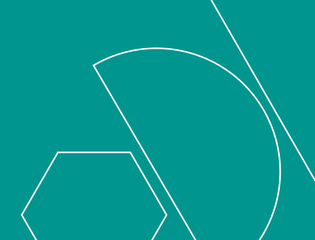Evidence from different disasters shows that humanitarian response often perpetuates the exclusion and marginalisation of LGBTI+ people. Practices such as the binary gender segregation of shelters and sanitation facilities, which require legal confirmation of gender identity in order to access aid, and the narrow definitions of 'households' on which aid distributions or needs assessments are based, make the process of seeking assistance for those in LGBTQI+ communities exclusionary and harmful.
At the same time, stories from different disasters also demonstrate the ability of LGBTI+ people to cope with the consequences of disasters and to use existing social networks to protect and recover themselves and their communities.
Evaluating gender diversity in humanitarian action.
The principle of gender equality asserts that all individuals, regardless of gender, should enjoy the same rights, responsibilities and opportunities. It also implies respect for the interests, needs and priorities of all genders.
The fight against discrimination based on sexual orientation and gender identity is inextricably linked to gender equality. This is because it challenges negative gender stereotypes and systemic discrimination based on prejudice. However, the aspect of diversity is often missing not only from evaluation but also from its application in programme design and implementation.
Diversity encompasses the full range of characteristics that differentiate individuals, including values, attitudes, cultural perspectives, beliefs, ethnic backgrounds, nationalities, sexual orientations, gender identities, disabilities, health, social and economic status, skills, and other specific personal attributes.
Diversity characteristics are unique to each individual and intersect with age and gender, making each person's profile distinctive. Respect for diversity entails acknowledging and appreciating the distinct characteristics of individuals and fostering a secure, welcoming, and non-discriminatory environment where the rights of all are upheld.
The general concept of diversity challenges us to avoid limiting ourselves to pre-defined groups that may be marginalised or require specific responses, as this may also be highly context specific. In this context, the term ‘gender diverse’ is used to describe gender identities and expressions that do not conform to traditional gender norms or expectations.
It is essential to apply a diverse Sexual Orientation, Gender Identity and Expression, and Sex Characteristics (SOGIESC). SOGIESC inclusion lens to evaluation activities to assess progress and improve outcomes. This is the only way to guarantee a safe, supportive and equitable environment for people with diverse SOGIESC, and it is a fundamental aspect of ensuring overall diversity and inclusion.
An opportunity to strengthen accountability to affected populations.
My experience of working in humanitarian crises has taught me that these are becoming increasingly complex, multifaceted and interconnected. A single context can have different groups of people affected at the same time and in the same place, including discriminated and invisible members of communities, such as people with different sexual orientations and gender identities (SOGI).
When individuals affected by humanitarian crises are at the centre of interventions and evaluations, it is imperative that no one is left behind. However, the specific needs of people of diverse sexual orientations and gender identities and expressions are often ignored or silenced in humanitarian responses, and for this very reason require special attention.
LGBTI+ individuals frequently encounter multifaceted challenges and are frequently subjected to discriminatory practices, abuse, prejudice, and violence. The situation is further complicated in humanitarian crises, where the discrimination faced by these individuals can be particularly severe.
The gender-diverse approach is therefore particularly relevant to accountability to affected populations, as it encourages humanitarian organisations to avoid perpetuating power imbalances and discrimination that can be exacerbated by crises and emergencies. It can also enable the identification and resolution of gender and diversity-related challenges and opportunities, and ensure that the inclusion and treatment of all affected individuals in humanitarian settings is equitable.
It is essential that the new ALNAP guidance for evaluating humanitarian action provides clear advice/direction for all stakeholders - from donors to organisations and evaluators - on how to ensure that evaluations are conducted effectively and avoid tokenistic references to undefined and mixed issues, including the application of a gender and diversity lens to evaluation criteria.
Putting it into practice
The guidance will ideally include some tips on how to mainstream gender diversity and inclusion in evaluation. For example, the guide could stress the importance of making gender diversity and inclusion analysis a mandatory part of every evaluation. Mentioning gender only once, for example under 'cross-cutting issues', will not be sufficient.
Requiring a gender-diverse and inclusive evaluation approach is a good starting point as would be including specific evaluation questions related to gender diversity under each evaluation criterion in the terms of reference of evaluations.
In addition, other tips for improving gender diversity and inclusion in evaluations could include:
- Collect inclusive data: use accessible methods and languages, consider different abilities and cultural norms.
- Engage diverse stakeholders: include insights from underrepresented groups, including LGBTI+ individuals and local organisations, to ensure evaluations reflect diverse perspectives.
- Segment analysis: disaggregate data by demographics to highlight differences and inequalities, and go beyond the binary of women-men, boys-girls.
- Provide evaluation teams with the skills to understand different contexts, realities and people's lives, and to interpret data in a way that is accurate and reflective of the differences.


